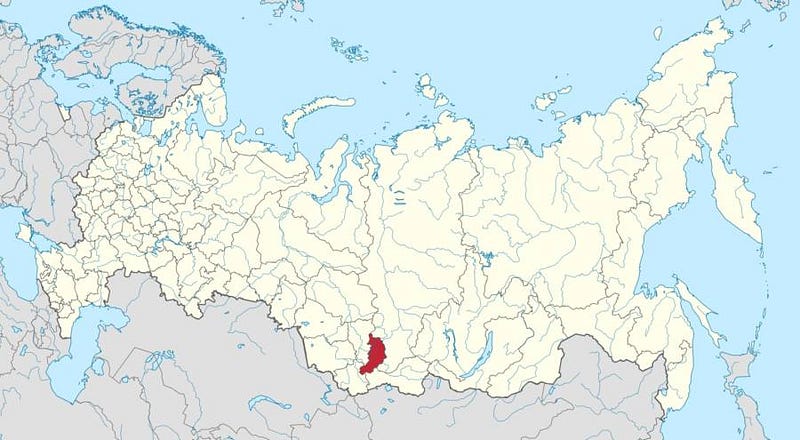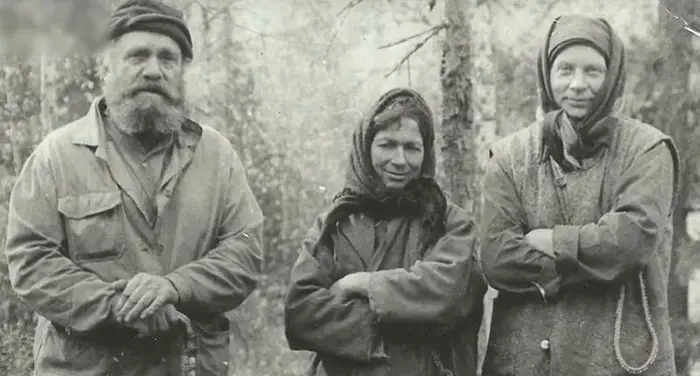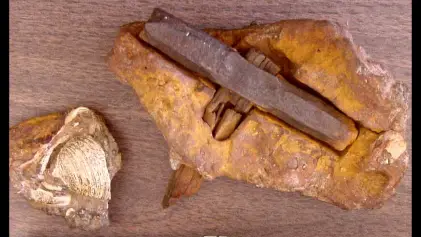 he Lykov family belonged to a religious minority, the rascal, persecuted during the Tsarist Empire and, after 1918, by the Bolshevik regime. In the 1930s, after Karp Lykov’s brother was killed by a communist soldier, he and his wife, Akulina, and their two children, Savin and Natalia, fled to wild Siberia, where they took refuge in an area completely isolated from civilization. In the 42 years of isolation, the two had two children, born and raised in the Taiga, and their settlement was discovered by accident only in 1978.
he Lykov family belonged to a religious minority, the rascal, persecuted during the Tsarist Empire and, after 1918, by the Bolshevik regime. In the 1930s, after Karp Lykov’s brother was killed by a communist soldier, he and his wife, Akulina, and their two children, Savin and Natalia, fled to wild Siberia, where they took refuge in an area completely isolated from civilization. In the 42 years of isolation, the two had two children, born and raised in the Taiga, and their settlement was discovered by accident only in 1978.
An accidental discovery
In 1978, a group of Soviet geologists on a mission to Siberia discovered a family that lived in the Taiga for several decades without anyone knowing about their existence. The Lykov family had not been in contact with other people for 42 years, nor did they know there was a Second World War. The Lykov family was discovered in the summer of 1978 by a helicopter pilot looking for a landing spot. He saw a lighted fence where there should have been nothing but a forest.
This was proof that the area was inhabited, although the Soviet authorities had no one in the place. It was about 250 kilometers away from the nearest town, in a region of the Taiga that was not explored until then. The four helicopter geologists, who were to study the area, were amazed by the pilot’s discovery and decided to investigate. Led by Galina Pismenskaia, geologists “armed” themselves with gifts but also with a gun.

Near a stream, they discovered a hut. Little, with a tiny window, it didn’t seem appropriate to serve as a home. It had, however, five tenants. Geologists were greeted by a very old man, who lured them in, where they discovered that that poor, dirty hut was home to five people: 77-year-old Karp Lykov, and his children, Savin, Natalia, Dmitri, and Agafia. Karp’s wife, Akulina, had died of starvation fifteen years ago.
Alienated humans
Geologists wanted to offer food, tea, bread, sweetness, and other things the old man knew from an early age, but which his children had never seen. Moreover, the children of the Lykov family had never met anyone except their parents. They knew that there were remote places where people lived in piles of tall buildings, they had heard that there were other countries besides Russia, but these were foreign concepts to them. They had learned to write and read from their mother, and the only books they had ever seen were the Bible and the Gospels that their parents had taken with them when they retired to the Taiga.

In the 42 years of isolation, the Lykov family had a difficult life. They survived with difficulty in an extremely hostile environment and with limited tools. They had used a few Iberians for many years, but after they finally rusted, they had little more to cook than they would gather from the forest. When they were found, their staple foods were rye potato chips and hemp seeds. In the summer they found berries, but the food was still inadequate. Family members have always lived on the brink of subsistence and hunger.
Only when the boy, Dmitri, grew up, he and his father were able to go hunting but even that was difficult, because they had no weapons available, and relied only on improvised traps. But Dmitri, geologists discovered, had developed an almost superhuman physical strength: he could hunt barefoot in winter and sometimes return to the hut after a few days, sleeping outside even at freezing temperatures.

The Geologists informed the members of the Lykov family of major events that have taken place around the world in these 42 years of isolation. The members were not even aware that a Second World War had taken place and upon hearing that a man landed on the moon the family refused to believe what was for them a supernatural and miraculous theory.
The faith of the Lykov family
The Lykov family refused to leave their settlement, even if they had the chance to return to a more civilized world than the one they had left, where they could live in better conditions. However, they remained in contact with the geologists who discovered them. In 1981, three of Lykov’s four children died. Savin and Natalia died of kidney problems, probably caused by the diet they had lived with all their lives. Dimitri had sadly also died due to a bad case of pneumonia.
Another reason why the Lykov family has also refused to return to the civilized world is that they thought that there is simply too much evil in the urban world and even with how harsh life had been on them they lived a much happier life secluded. In 1988 Karp died due to natural causes. Agafia is the last member of the Lykov family who is believed to still live secluded in Taiga even to this day if she hasn’t died from natural causes.
Avid Writer with invaluable knowledge of Humanity!
Upcoming historian with over 30 million views online.
“You make your own life.”





